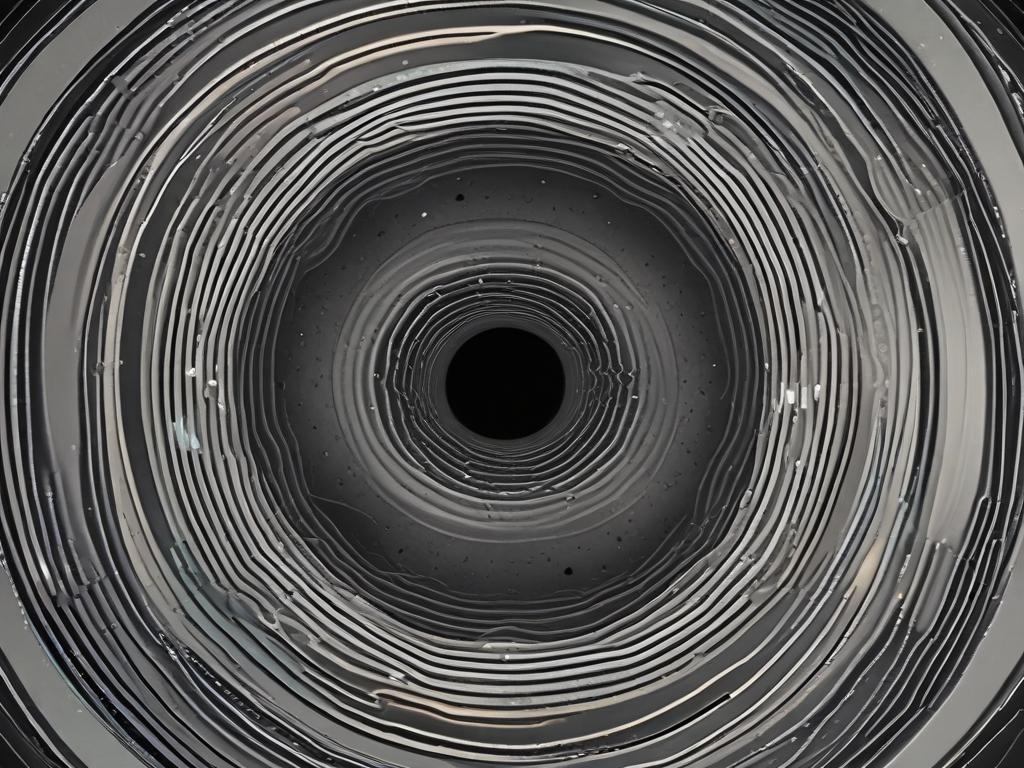
Black holes have long captivated the imagination of scientists and laypeople alike, representing one of the most enigmatic phenomena in the universe. Traditionally seen as regions of spacetime where gravity overwhelms all, including light, recent theories suggest that these cosmic giants may actually function as quantum-geometric structures. This innovative perspective invites us to reconsider the very fabric of reality, bridging the gap between quantum mechanics and general relativity. By examining black holes through the lens of quantum geometry, we can unravel some of the most puzzling aspects of their existence, particularly the notorious information paradox.
As we delve deeper into this fascinating topic, we'll explore how this fresh viewpoint sheds light on the unresolved mysteries surrounding information loss in black holes. The juxtaposition of quantum mechanics with the geometric nature of spacetime offers a promising framework for understanding how information may be preserved even in the direst gravitational confines. In this blog post, we will navigate the intricacies of black hole dynamics, illustrating how quantum geometry not only enriches our comprehension of these cosmic entities but also challenges our conventional notions of space, time, and information itself. Join us on this journey to discover an innovative perspective on black holes that seeks to resolve longstanding paradoxes and redefine our understanding of the universe.
Understanding the quantum-geometric nature of black holes
Black holes have long fascinated scientists and astronomers alike, but recent advances in theoretical physics reveal a deeper aspect of these cosmic anomalies. Researchers are investigating the concept of quantum geometry, which suggests that spacetime itself possesses a granular structure at the Planck scale. This innovative perspective recasts black holes not merely as singular points of mass but as complex entities woven into the fabric of quantum spacetime. The interactions between quantum mechanics and general relativity produce intriguing results, challenging our traditional notions of gravity and locality.
The quantum-geometric nature of black holes also influences their thermodynamic properties. According to recent theories, black holes may have inherent quantum states that encode information about the matter that falls into them. As physicists explore this framework, they uncover potential resolutions to long-standing puzzles in physics. By viewing black holes through the lens of quantum geometry, researchers open the door to a myriad of possibilities addressing the infamous information paradox, suggesting that information is not simply lost within a black hole but is rather preserved in a transformed state. This shift in perspective compels us to rethink not only black holes but the very laws governing our universe.
Exploring innovative perspectives on information paradoxes
The concept of the information paradox poses a significant challenge in theoretical physics, particularly when it comes to understanding black holes. Traditionally, the thought that information is lost within a black hole contradicted the fundamental principles of quantum mechanics. However, by embracing a quantum-geometric perspective, scientists can explore groundbreaking solutions that suggest information may not be entirely lost but rather transformed or encoded in ways not yet fully understood. This innovative approach leads us to reexamine the relationship between information and gravitational systems.
Recent research posits that by viewing black holes as structures defined by quantum geometry, we can reconcile the apparent contradictions within our current understanding. This perspective allows for the potential recovery of information through holographic principles, suggesting that the details of the matter falling into a black hole are stored on its event horizon. As physicists delve deeper into these ideas, they not only challenge long-standing beliefs but also pave the way for new theories that could unify quantum mechanics and general relativity, ultimately reshaping our comprehension of black hole dynamics and the universe at large.
How quantum geometry reshapes our view of black hole dynamics
Quantum geometry offers a fresh lens through which we can understand the complex dynamics of black holes. Traditionally, physicists approached black holes through the lens of classical physics, often grappling with paradoxes and contradictions presented by their enigmatic nature. However, by reimagining black holes as quantum-geometric structures, researchers can reconcile these inconsistencies. This approach suggests that spacetime itself is not merely a passive stage for physical events but an active participant in the interactions involving black holes. By integrating quantum theory with general relativity, we unveil a dynamic interplay between geometry and quantum fluctuations, leading to novel insights about how black holes function on both macroscopic and microscopic scales.
Moreover, this innovative perspective has profound implications for our understanding of black hole evaporation and the information paradox. Embracing the concept of quantum geometry enables us to contemplate the possibilities of information preservation, suggesting that information may not be lost when objects fall into a black hole as previously thought. Instead, the intricate structure of spacetime near a black hole's event horizon may encode this information and allow for its eventual retrieval. This notion not only alleviates the tensions surrounding the information paradox but also expands the theoretical framework within which physicists can explore the fundamental nature of reality. In this reimagined view, black holes become not just destroyers of information but crucial players in the broader tapestry of the universe, underscoring the need to delve deeper into their quantum-geometric characteristics.